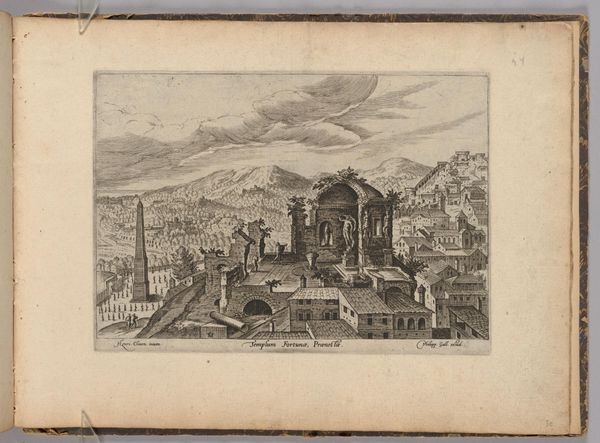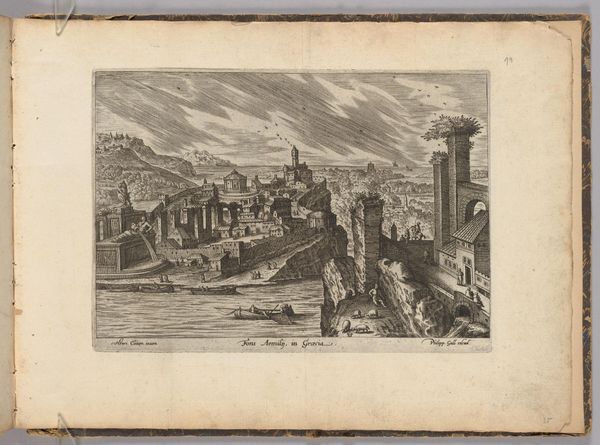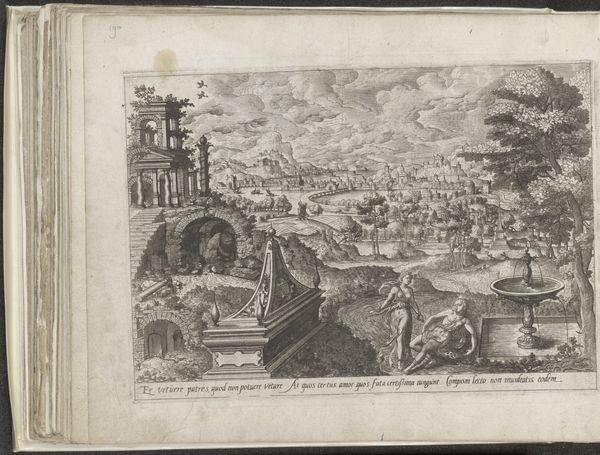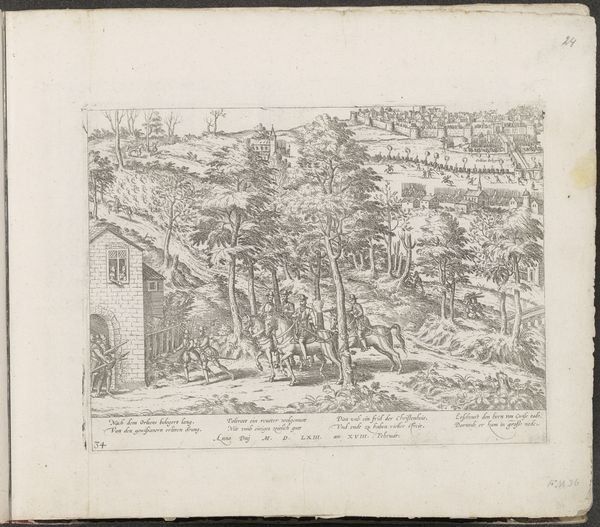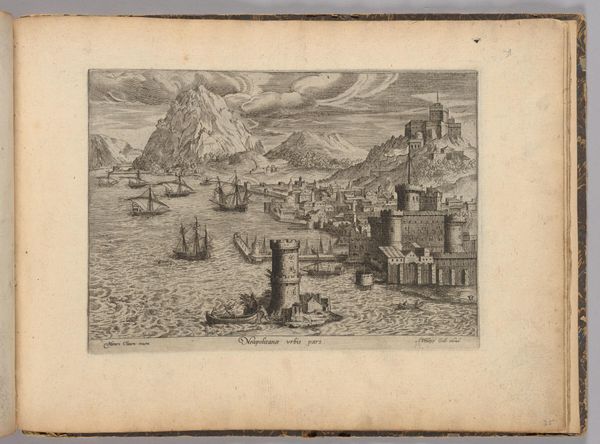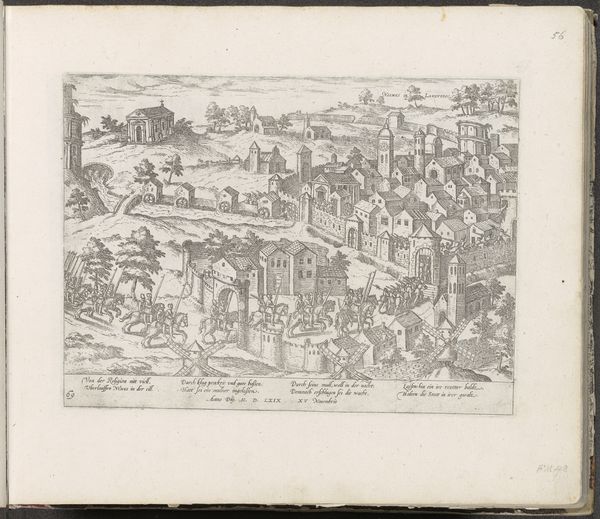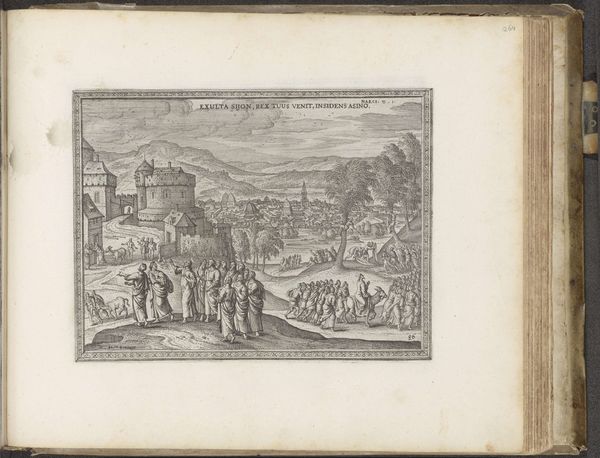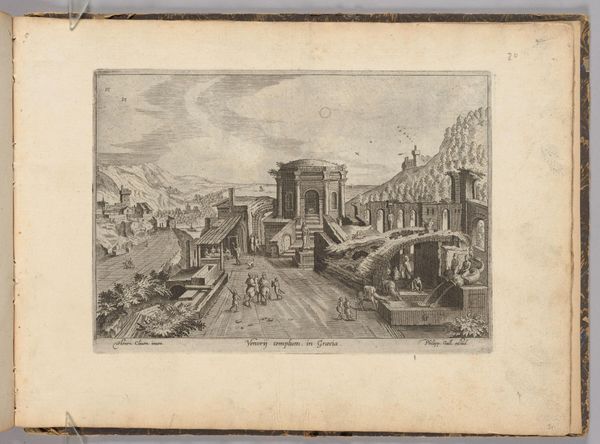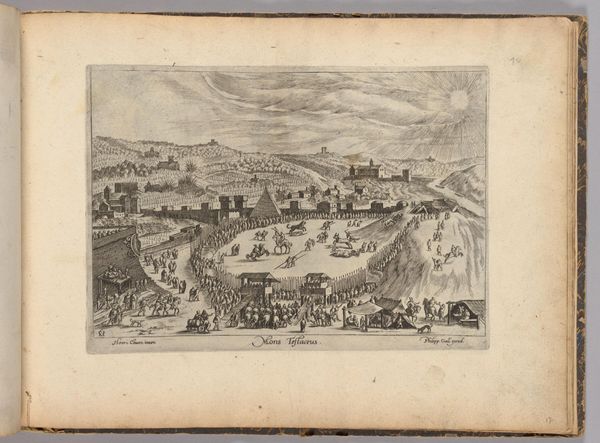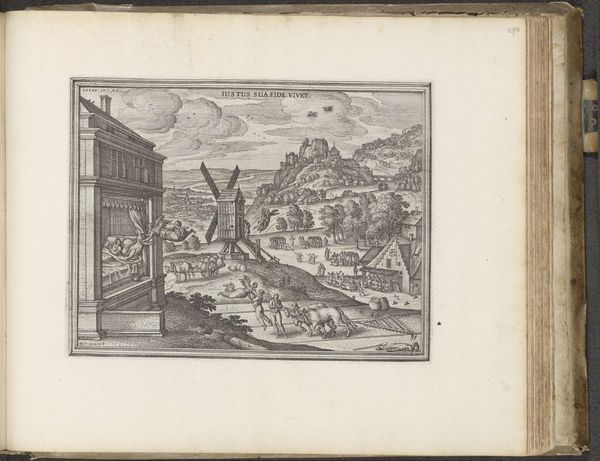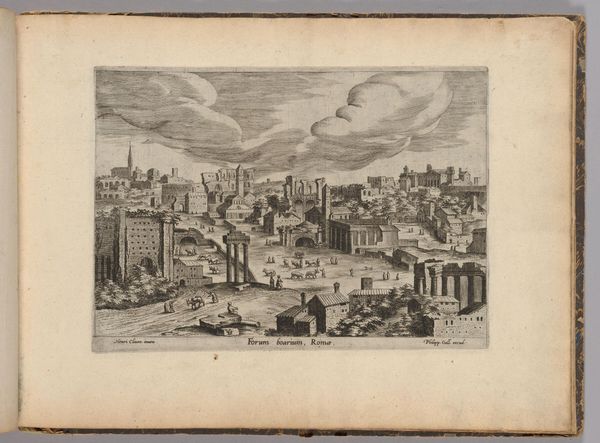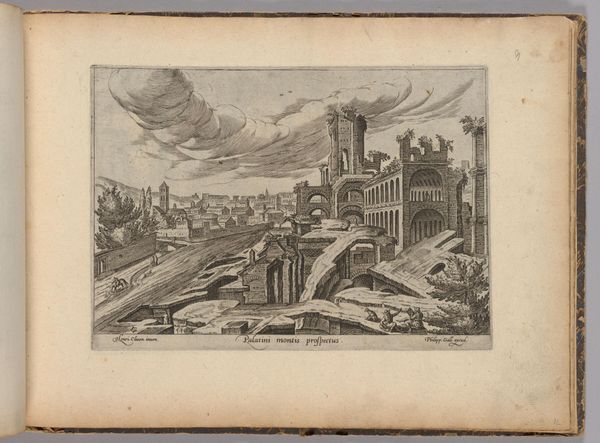
The House of Loreto (Loreti opidi, Divae Mariae sacri, effigies) c. 16th century
0:00
0:00
Dimensions: plate: 17.5 x 24.2 cm (6 7/8 x 9 1/2 in.)
Copyright: CC0 1.0
Editor: This is "The House of Loreto" by Hendrick van Cleve III. It appears to be a print of a city. I am intrigued by the contrast between the ruined structure on the left and the fortified town in the distance. What can you tell me about this composition? Curator: Observe how the linear perspective directs our gaze. The artist uses line and shadow to create depth, leading the eye from the crumbling foreground toward the idealized city. The interplay of light and dark enhances the dimensionality of the piece, doesn't it? Editor: Yes, the lines create a sense of distance. Curator: Precisely. The formal arrangement of elements—the crumbling structure, the aqueduct, the fortified city—forms a visual narrative. Each contributes to the overall structural integrity of the piece. Editor: I see it now, the elements are almost like layers, each essential to the whole picture. Curator: Indeed. By analyzing these intrinsic elements, we can decode the artist's visual language and appreciate the structured beauty.
Comments
No comments
Be the first to comment and join the conversation on the ultimate creative platform.
